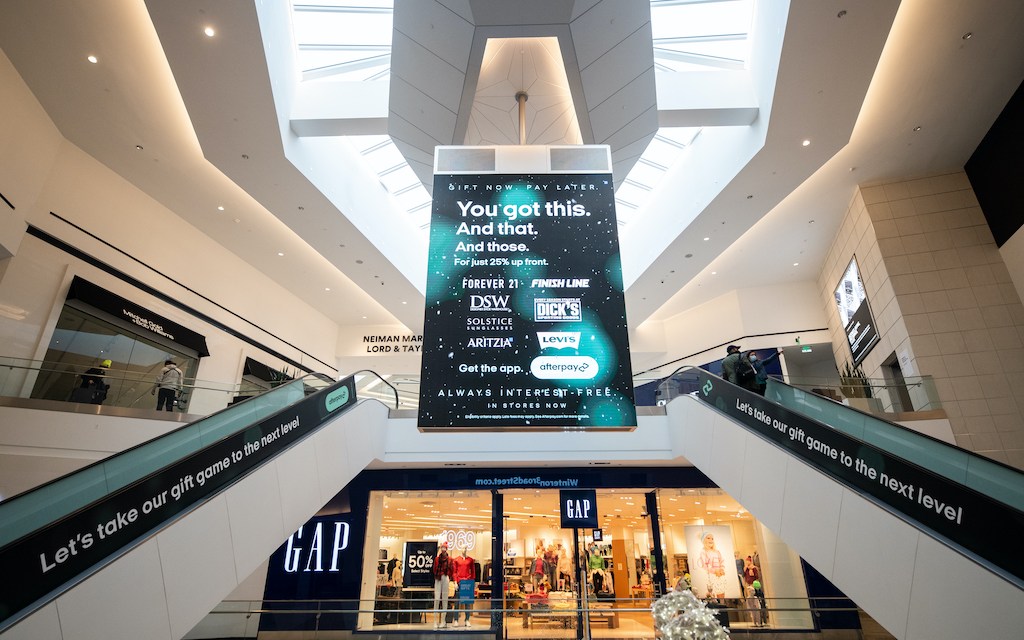Buy now, pay later services are hoping for a big holiday season

Retailers are hoping that there will be flurry of buy now, pay later activity this holiday shopping season, with the headwinds of high inflation and a looming recession causing shoppers to seek new financing options.
In turn, companies are ramping up marketing efforts to give these potential new BNPL customers an extra push before Black Friday. From as early as late October through the end of the year, some brands and BNPL companies are laying out special offers: PetSmart, for example, is offering $10 off for first-time Afterpay users who spend $50 or more for the rest of 2022. Affirm is offering 0% interest on three equal monthly payments for eligible products on Amazon through Nov. 28. Afterpay, meanwhile is pushing in-person use of BNPL with pop-up mall kiosks.
But how successful these strategies will be remains to seen. Industry surveys offer various forecasts: Deloitte found as many as 37% of users plan to use BNPL. Marketing firm Vericast shows at least 21% of holiday shoppers say they’ll use BNPL, while Bankrate found one in 10 users plan to do so. How the services resonate may ultimately depend on the brand, and how much disposable income their customer base has.
DTC apparel brand Draper James, for example says about 5% of transactions on its website so far this holiday season have used BNPL services, roughly on par with last year’s mid-November sales.
CEO Erin Moennich told Modern Retail though the premium brand — founded by Reese Witherspoon — is examining the amount and methods of payments it offers, she anticipates BNPL is here to stay.
“I think splitting payments and things like that is just kind of expected,” she said. “Everybody’s going to have at least one or two on their site at this point.”
Chip West, director of category strategy for national sales at Vericast, said BNPL services may draw in new budget-minded shoppers this holiday season because payments are made installments, allowing shoppers to stretch their budgets. That’s particularly relevant now, West said, with 95% of consumers are concerned about inflation, according to Vericast data.
“With a high inflation and fuel prices, everybody’s getting impacted,” said Chip West, director of category strategy for national sales at Vericast. “So they’re looking for ways that they can make those purchases, and even splurge.”
Appealing to new shoppers
BNPL services exploded in popularity during the e-commerce boom of the pandemic, especially among Gen Z and Millennial shoppers. But there’s the potential for users to overextend themselves with too many financing plans across platforms that don’t involve credit checks. And there’s the risk of an interest fee as high as 25%, in some cases, for missed payments.
Often marketed as an alternative to credit cards, BNPL services have become ubiquitous among leading retailers. Behemoths like Amazon, Target and Walmart accept multiple services like Affirm, Klarna and Zip. So do department stores like Macy’s and Kohl’s, as well as specialty retailers like REI, Athleta and Lego.
Natalie McGrath, vice president of marketing for BNPL service Afterpay, said Afterpay began its holiday marketing campaign in October – two weeks earlier than last year – with plans to run it through December on channels like TikTok, Facebook and out-of-home displays. In addition to targeting Gen Z, Afterpay will focus on “the Millennial mom,” who may use BNPL for household essential items.
McGrath described the company’s marketing strategy as being centered around, “how do we provide an awareness through the lens of shop early, use after pay, and have everything paid off before Christmas? Versus historically, everyone spends on credit cards, and then they’re still paying off Christmas in March.”
Afterpay is also focused on growing the use of BNPL for in-store shopping with pop-up kiosks at malls, including Westfield and Simon properties. Shoppers can get maps showing which stores offer BNPL and receive promotional codes, McGrath said. Current partners include brands like Ulta, Nordstrom and Lululemon.
“We have a big investment across all of those malls, which is to drive consumer awareness of the product and to get people back shopping in store,” McGrath said.
Spending concerns
The rise of BNPL and its popularity with young shoppers raises concerns about debt loads or overextended budgets. McGrath said Afterpay aims to combat that by cutting people off from using the service after they miss one payment. About 5% of Afterpay transactions incurring a late fee, she said.
“The whole notion is you have to build internal credit with us as a business. Pay on time, then we’ll increase (spending limits),” McGrath said. “I think it’s a core value proposition, a reason why the consumer likes shopping with us.”
“Folks are looking wherever they can for savings,” West from Vericast. “And if they find something early in the shopping process in the holiday shopping season, and they want to buy it, they’re going to buy it.”
Vericast data shows 57% will use some form of financing option for holiday spending, whether that’s credit cards, BNPL or layaway.
West said ultimately that retailers are poised to benefit from BNPL because people can make a purchase even when they don’t immediately have funds available. And if it works for them during the holidays, they might come back again, he said.
“It gives these retailers an opportunity to reel in consumers that might not have historically been their customer,” West said. “And once they do that, and they’re happy with their experience, there’s a loyalty play there as well.”

